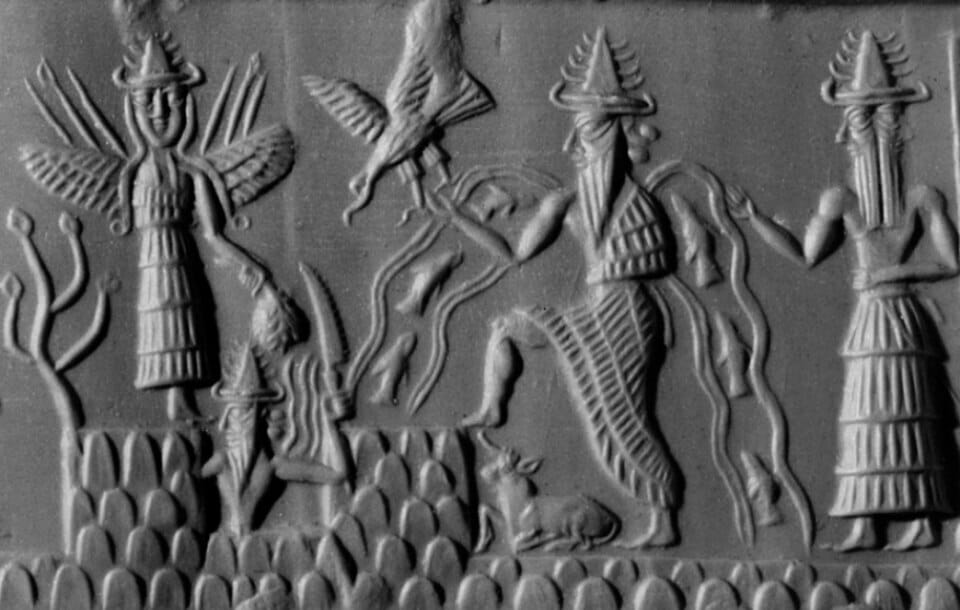- Other Worlds
- Posts
- Human DNA: Alien Engineering?
Human DNA: Alien Engineering?
The Enigma of Human DNA
DNA

For centuries, humanity has pondered its origins, with traditional scientific theories and religious narratives offering various explanations. In recent decades, a more controversial hypothesis has emerged: that human DNA bears the hallmarks of extraterrestrial intervention. This blog explores the complex intersection of mainstream genetic science and alternative theories suggesting alien engineering of human DNA, examining both perspectives through a historical and analytical lens.
The Scientific Understanding of Human DNAModern genetics tells us that human DNA consists of approximately three billion base pairs, with only about 2% encoding proteins. The remaining 98%—once dismissively labeled "junk DNA"—has increasingly revealed complex functions. According to mainstream science, humans evolved in Africa through natural selection over millions of years, with recent research suggesting multiple genetically diverse populations across the continent contributed to our species. A fascinating discovery by NASA scientists adds an intriguing dimension to this narrative. Researchers found that DNA building blocks—molecules like adenine and guanine that form the rungs of DNA's ladder-like structure—can form in outer space and have been deposited on Earth via meteorites. Twelve meteorites collected from Antarctica and Australia contained these crucial molecules, with some harboring exotic compounds so rare on Earth that they must have originated in space. This discovery lends credence to the theory that pre-made parts from meteorites might have kick-started life on Earth—though through natural processes rather than intelligent design. Caption: A diagram illustrating the double helix structure of DNA. |  The human genome's complexity continues to surprise scientists. What was once considered useless "junk DNA" is now understood to include transposons (segments that can change location within a genome), regulatory elements, and pseudogenes (remnants of once-functional genes). As geneticist Cristina Sisu noted, "Slowly, slowly, slowly, the terminology of 'junk DNA' has started to die," reflecting growing appreciation for noncoding DNA's biological significance.Feature Story |
Ancient Astronaut Theory

Proponents of the ancient astronaut theory suggest that extraterrestrial beings directly intervened in human evolution through genetic engineering. This hypothesis posits that aliens modified primitive hominid DNA to create modern humans, explaining what they see as evolutionary "leaps" that seem too rapid for natural selection alone. The theory often points to ancient texts and artifacts that allegedly depict extraterrestrial visitors, from Sumerian tablets to Egyptian hieroglyphs. Proponents like Zecharia Sitchin interpreted ancient Mesopotamian texts as describing the Anunnaki—advanced beings from another planet who created humans through genetic manipulation to serve as laborers. Caption: A depiction of Anunnaki from ancient Mesopotamian texts, often cited in ancient astronaut theories. Some theorists focus on what they consider anomalies in human DNA. They suggest that "junk DNA" might contain alien signatures or dormant extraterrestrial genetic code. The hypothesis proposes that certain human traits—like large brain capacity relative to body size, reduced body hair, and susceptibility to back problems—indicate species not fully adapted to Earth's environment, potentially pointing to off-world origins or engineering.
The Essentials
Analyzing the “Alien Engineering” Hypothesis
Analyzing the "Alien Engineering" Hypothesis. From a scientific perspective, the alien engineering hypothesis faces significant challenges. The human genome shows clear evolutionary relationships with other primates, with genetic evidence tracing our lineage through natural selection. Recent research published in Anunnaki depiction Nature demonstrates that modern humans emerged from the interaction of multiple populations across Africa over hundreds of thousands of years, with the earliest detectable split occurring 120,000-135,000 years ago. The "junk DNA" often cited by alternative theorists as potential alien signatures has increasingly revealed natural evolutionary origins. Transposons, for instance, make up about half the human genome and spread by making RNA copies of themselves—a natural process requiring no external engineering. Similarly, pseudogenes typically represent duplicated genes that have degraded through mutation, a common evolutionary occurrence. Scientists can now trace human genetic development through comparative genomics, showing gradual changes consistent with natural evolution rather than sudden, engineered leaps. The discovery of DNA building blocks in meteorites suggests that life's basic components may have extraterrestrial origins, but through natural chemical processes rather than intelligent design. Caption: An image illustrating a meteorite and the chemical structures of DNA building blocks found within it.
Bridging Perspectives: Where Science and Speculation Meet Interestingly, some areas of modern genetic research blur the line between "alien" and engineered DNA. Scientists at Scripps Research Institute have created living cells with "foreign" DNA building blocks not found in nature—literally storing increased genetic information. This synthetic "alien DNA" demonstrates how intelligent beings can indeed engineer genetic code, though in this case, the engineers are human. This research raises philosophical questions about the definition of "alien" DNA. If humans can engineer genetic code, could other intelligent beings have done so in the past? While there's no scientific evidence supporting this hypothesis, it illustrates how the concept of genetic engineering by intelligent beings isn't inherently unscientific—only the specific claim of extraterrestrial intervention lacks empirical support. Meteorite with DNA building blocks.
Conclusion: The Continuing Quest for Human Origins The story of human DNA continues to evolve as scientific understanding deepens. Mainstream genetics offers a compelling narrative of natural evolution, with increasing appreciation for the complex functions of noncoding DNA and the possibility that basic building blocks arrived from space via meteorites. Alternative theories of alien engineering, while lacking scientific evidence, reflect humanity's enduring quest to understand our origins and place in the cosmos. As we continue to explore the human genome and our evolutionary history, maintaining both scientific rigor and intellectual openness allows us to appreciate the remarkable story written in our DNA—a story that, whether through natural processes or other means, connects us to the broader universe in ways we are only beginning to understand.
Until next time,
«€eez∆eR»